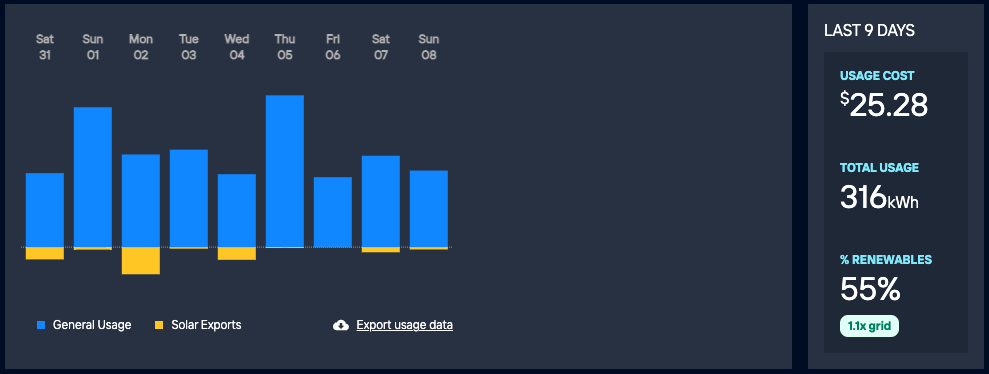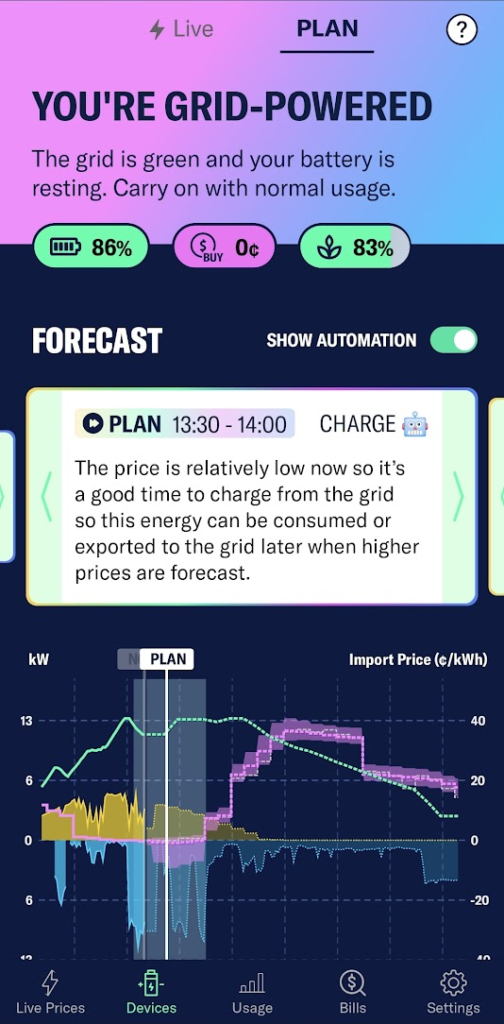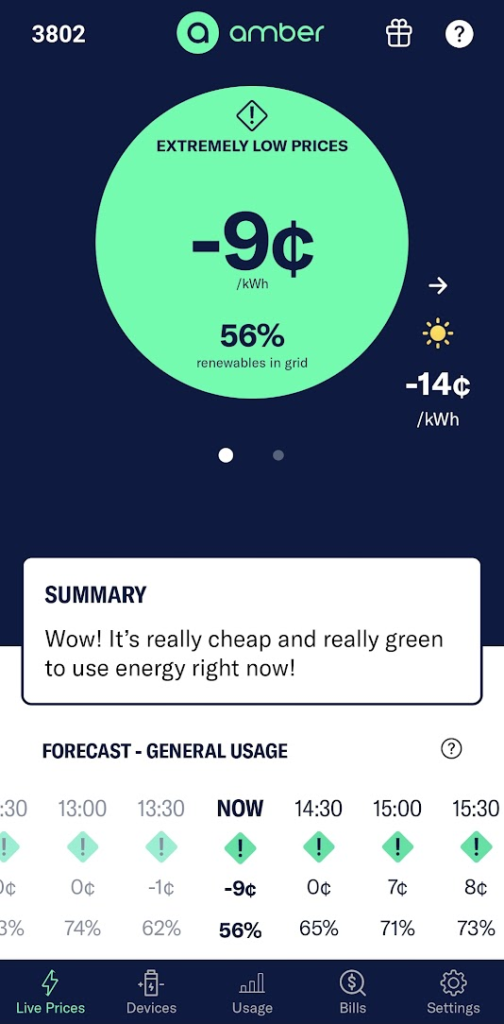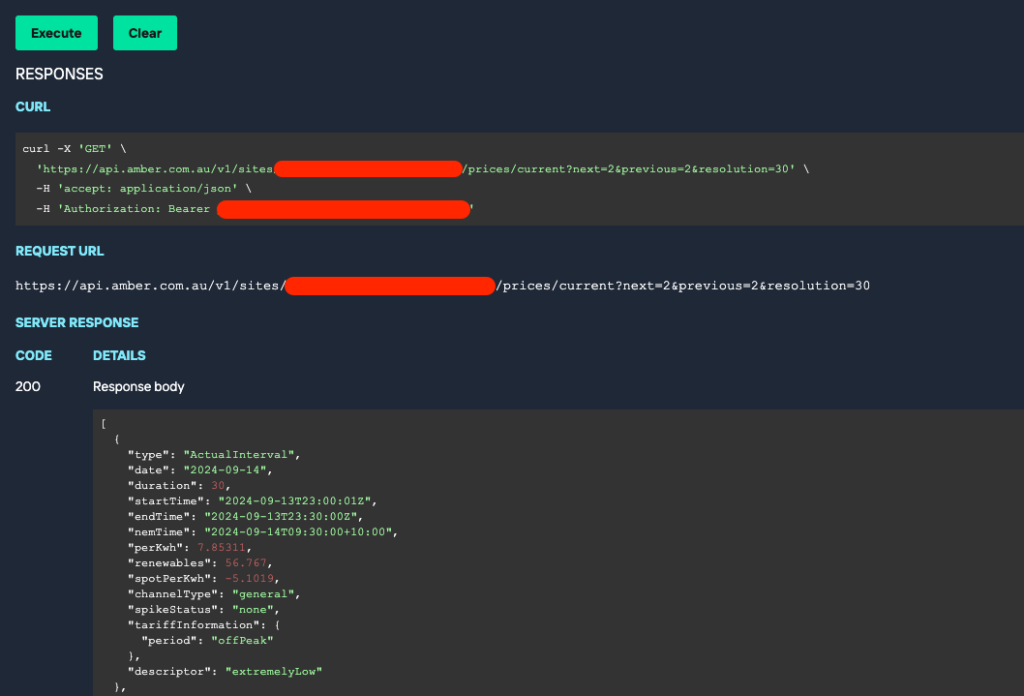Hello Amber, Bye Amber
I switched to Amber Electric as one of the early adopters in April, 2021, because I had my PowerWall 2 installed a few months earlier and was eager to see how using more renewable energy could save me some money, and reduce my carbon footprint too – something I seemed to care.
Billed at wholesale electricity price at real time, plus network fee, connection fee and the subscription fee of course, is tempting and risky at the same time. If I have to use a lot of power at peak hours, eg. 6PM, I might end up paying a lot more with wholesale price. But at the other hand, if I avoid using grid power during peak hours, because I can with my home battery, in theory I can save a lot of money.
It turned out a bit impractical though. The PowerWall 2 only supports 2 modes:
- Self Powered mode: It will collect solar power and try to minimise grid import. This doesn’t work with Amber because I probably want the solar energy to be exported in early morning when the price is good. Also this mode doesn’t really work if I have an EV unless the EV is only charged in midnight.
- Time of Use mode: This will setup a schedule when the battery will charge and when to discharge. This doesn’t work with Amber well either, as wholesale price has a pattern but fluctuates a lot through out a day – the price might not be very low during lunch hour because it’s a rainy day.
Even if I bother to check the wholesale price once in a while and manually direct the battery to cheap charge and preserve until peak hours, there’s no remote for this – no charge nor discharge button on the Tesla app.
After having exhausted all the options, I admitted that the experiment was a failure.
Free Lunch with Globird
I moved to Globird after a few months, when Globird started to offer the Free Lunch plan which simply gives electricity for free from 12PM to 2PM, 7 days a week. I almost scheduled everything to run during these 2 hours – EV, PowerWall, heat pumps, etc., and it worked. I didn’t pay much in most months a year: I still get feed-in credit during summer, break even in autumn and spring, around $200 a month in winter.
Then it was the price hike. In July, 2023, the price has increase significantly. There’s no change to the 2 hours of free power, but to the rest 22 hours of a day, price for a kwh jumped from 21c to 39c – almost doubled! To make things worse, I couldn’t always charge my car at home during lunch hours which means even if I charge at midnight when wholesale price is usually low, I still need to pay 39c/kwh. That’s part of the deal to have free power, but it doesn’t work well for me any more.
Amber, Round 2
I’ve heard that Amber started to support automation for batteries including Tesla PowerWall 2, still with my past experience I hesitated to try it. Until one of my friend in Queensland who has a very similar setup told me, Amber earned him $50 a day during a power spike. I didn’t think that could happen to me though because in Victoria there isn’t much power spike – not every household turns on an AC during summer.
Anyways, I signed up Amber again with battery automation this time – now my PowerWall knows when to charge. Also I noticed in the past few years, wind power has become much more powerful in Victoria and rooftop solar power has gone through the roof! Simply put, it’s no longer uncommon to see negative power price during noon hours and even in midnight if it’s really windy – you probably saw how windy this place can be on recent news.
So far machine learning at Amber is doing very well. For the past 9 days I bought 316kwh of power from the grid for only $25.28(roughly 8c/kwh). And it’s just September. Let’s see how it goes in the summer – there are many sunny days ahead.

A side note re. solar export: With Amber, it’s very important to minimise your solar feed-in because most of time(in Victoria) the wholesale price for solar feed-in is near 0 or even negative.
Some screenshots from the app: Plans are what the AI thinks the best way to save money. If it didn’t get it right, the battery can be controlled via a few buttons too. This was what I needed for a long time. In the screenshot below, Amber decides to hold the battery at high charge and use grid when wholesale electricity is basically free. It’s actually clever to not to charge the battery to full, guess why?

Sometimes when there is a lot of renewable energies in the grid, eg. sunny, windy or both, the price can go negative. Which means I’ll get paid for using energy from the grid. And of course at this moment I’ll pay even more if my solar power is exporting energy to the grid. The worse case scenario is that I’ll turn off my solar power if the battery is already full and I can’t consume the excess energy – too much energy is not good for the grid.

I save the best part for last: As an Amber user I get to use the APIs they offer. So if I decide to train some AI model which requires a lot of power, I can use this API to turn it on only when the wholesale price is extremelyLow. Ok AI training could be a bit far-fetched, what about whole house air conditioning for free?

And naturally, Amber encourages referrals. If you’re gonna give Amber a try, here’s a $30 sign-up bonus link(both you and I will get $30).
🙂
